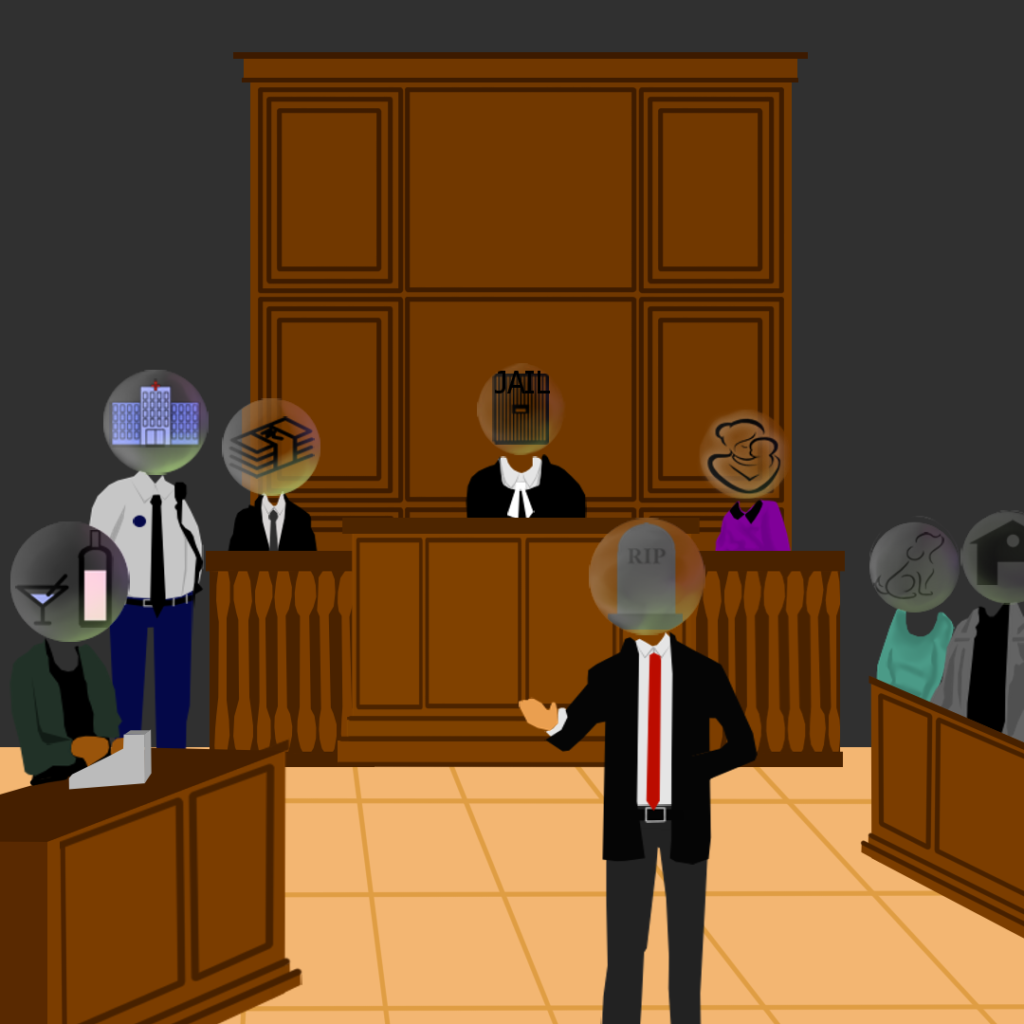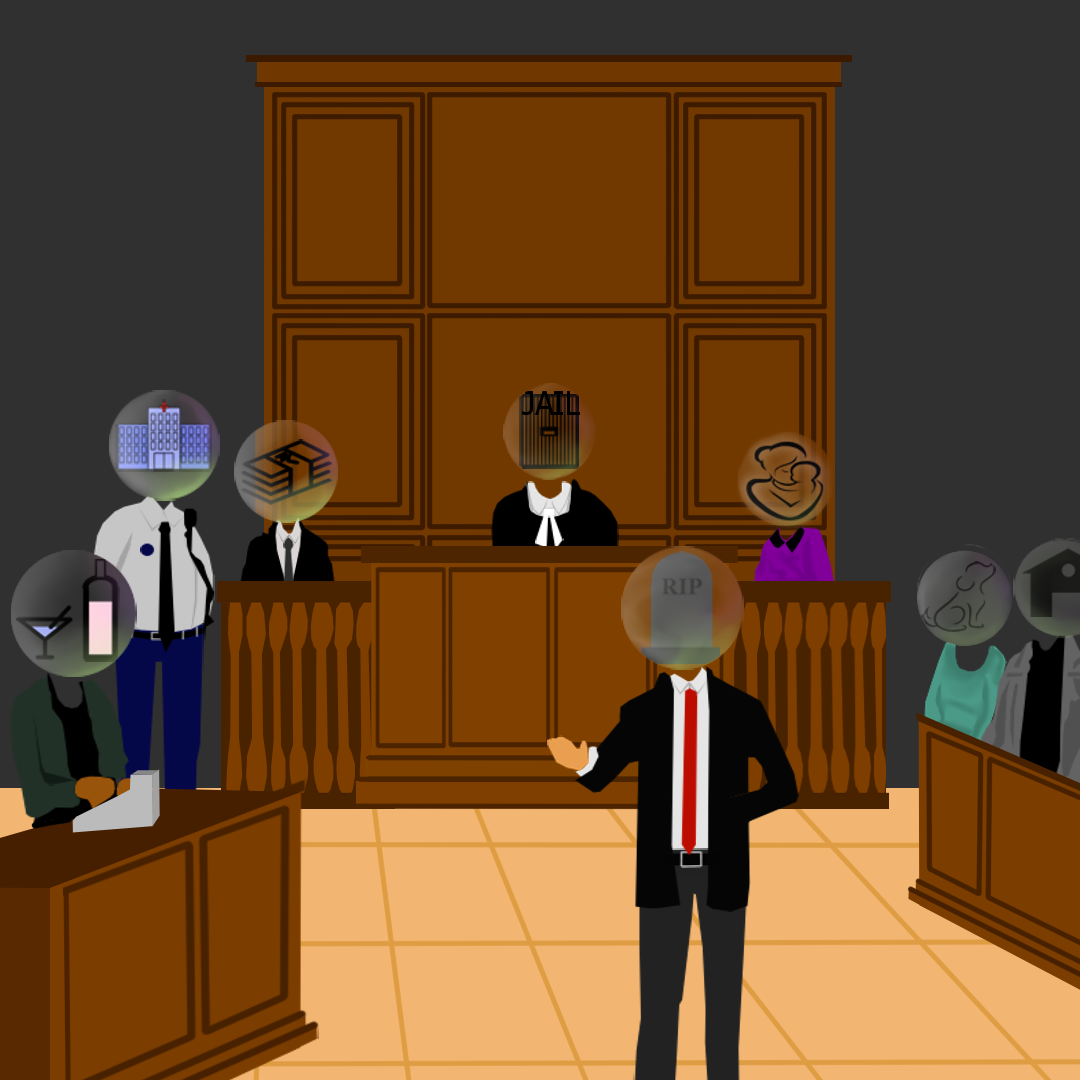
You slump in front of your laptop as the teacher rambles on through the meeting. Your mind flits from an Oscar-worthy daydream to your uneventful Instagram account. Suddenly, the teacher calls out your name, and you hurriedly unmute yourself, fumbling through a blatantly incorrect answer. She decides to go through the entire topic again, while you roll your eyes and begin to rant on your group chat about how useless this subject is. Just as monotony begins to take over the class yet again, her phone musically interrupts her speech. She forgets to mute herself like she usually does whenever this happens, and a short tirade of words in her mother tongue ensues. And just like that, a bunch of students all around the world hear her composure crumble. You only catch the words ‘positive’, ‘hospitalize’, and ‘coma’ before she shakily announces that the class is over. You pick up your phone again to talk about this sudden turn of events but end up guiltily staring back at a lengthy, incriminating conversation about a worthless subject and incompetent lecturer.
What you just experienced was a ‘paradigm shift’. Coined by the philosopher Thomas S. Kuhn, the term refers to a fundamental shift in one’s approach, underlying assumptions and perception of events. Generally, it serves as an adaptive mechanism when a new phenomenon or new information renders a previous outlook incompatible with present reality. In the above scenario, the professor’s misfortune made any commentary on the quality of her teaching obsolete, and the students’ paradigms shifted such that they could now see her as a fellow human instead of a villainous point of authority, and sympathize with her.
While this represents the concept with a smaller, day-to-day range of influence, paradigm shifts can be found ensconced in much larger settings, with the power to radically change public mindsets. In the movie A Time to Kill, adapted from the book of the same name by John Grisham, a black man is on trial for the murder of his daughter’s white rapists. The all-white, prejudiced jury cannot see beyond the murders and dismiss the original crime entirely. The defendant’s perfervid lawyer, however, painfully narrates the entire rape, ending with the damning sentence ‘Now imagine if she was white.’ That one statement is enough to shock and shame the jury as well as all other spectators into dropping their inherent racism in an instant. The movie uses its creative liberty to show this change in ideals at an extreme level, but real-life crime and society are also perennially at the mercy of people attempting to shift perspectives to suit their purposes.

Ideals in revolutionized times seem buried in old and unsympathetic ideas of time. Examples from various criminal cases show how paradigms of old minds influenced the proceedings and fogged rationalized thinking. The most recent case was that of the suicide of actor Sushant Singh Rajput and the involvement of his girlfriend Rhea Chakraborty and multiple other faces of the Bollywood industry. The initial reaction was that of pity for the accused, and campaigns like ‘Justice for Rhea’ flooded the stream, but later allegations that she and her brother were involved in taking drugs and supplying that to the victim changed public perspective. At the media level, the case quickly shifted from a call for justice for the deceased to alleged drug addicts of the Bollywood industry, while also calling out supposed nepotism in the industry itself.
The late actor himself had been a victim of such changing narratives when his final film, “Dil Bechara”, was marred by sexual assault accusations against him, with his co-star Sanjana Sanghi being the purported victim. The case was hyped as the idea of big-shot actors indulging in sketchy deeds, despite the fact that it was eventually proven false.
In such issues, particularly when a very public crime is involved, the media creatively uses paradigm shifts as a cunning tool, polarizing audiences one way or the other, back and forth like a tennis match. This way of reporting has fogged people’s ability to distinguish between the truth and unaccounted details of the case. Often, people lean towards the most daunting and irrational storyline, forgetting the authenticity of the data that they should strongly believe and support.

Another such example is the unresolved and infamous, 2008 Noida double murder case, the murder of Aarushi Talwar and Hemraj Bajande. The 13-year-old victim’s parents, Rajesh and Nupur Talwar were accused of the crime. In a cheap turn from the sheer tragedy and horror of the case, various insulting insinuations ranging from a possible extramarital affair of Rajesh Talwar that was exposed to an underage affair between Aarushi and Hemraj, which led to their death by their parents who objected to the relationship. These dehumanizing, baseless gripes were fodder for yellow journalism. The empowering messages from ‘A Time to Kill’ found a lamentable corporal opposite—where the former sought to etch a girl’s humanity, the latter squeezed it away in a bid to cater to the sleazy public. Both were classic examples of shifting paradigms in criminal minds and judicial cases, shifting towards and away from the truth respectively.
The case of Commander K. M. Nanavati vs. the State of Maharashtra presents an interesting dichotomy. The case revolved around the murder of Prem Ahuja, the accused’s wife’s lover, on the grounds of physical confrontation by the victim while being questioned about the affair. In a film adaptation, Nanavati was portrayed as a righteous officer while Prem Ahuja portrayed a rich playboy who seduced his lonely wife. The portal not only won public sympathy with women standing outside the court throwing roses at Nanavati but also swayed the jury and the case verdict in his favor, declaring him to be ‘Not guilty’ with an 8:1 vote. The judge, finding the verdict perverse, referred the case to the Bombay High Court, where Nanavati was found guilty of homicide amounting to murder and sentenced him to life imprisonment from which he was pardoned after serving 3 years. This strange turn of events serves as a testimony to the effect that outlooks and archetypes have even in courts of justice, even in the face of truth. Crime and time have shown various scenarios of judgments based on ideals and not on facts and evidence. Rationalized thinking and being educated on the right versus the wrong are essential tenets for unbiased justice.
Crime and society are leviathan human constructs in this dystopia, yet they are constructed from a beehive of judgments made by each and every seemingly unimportant person. Our outlooks serve as our beau ideals, and every piece of information decides whether our paradigms swivel or stay. By the way, your neighbor seems to be screaming again. What will your expression be when you knock on their door?
Written by Snehal Srivastava and Ankitha Giridhar for MTTN
Edited by Tanya Jain for MTTN
Featured Image by Akshaya Ramesh for MTTN

Leave a Reply
You must be logged in to post a comment.